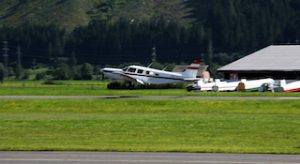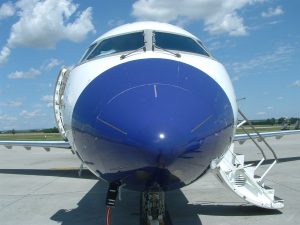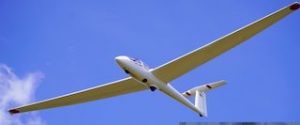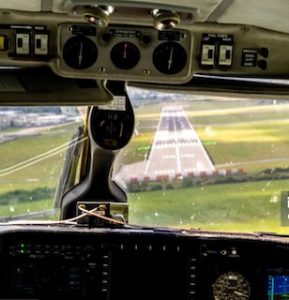Simulation Offered In Aviation Training Institute
 In the aviation industry, effective training is crucial for ensuring safety and proficiency among pilots and other aviation professionals. Aviation training institutes leverage advanced simulation exercises to provide realistic and immersive learning experiences. This article delves into the various kinds of simulation exercises offered in aviation training institutes, highlighting their significance, applications, and benefits for aspiring aviation professionals.
In the aviation industry, effective training is crucial for ensuring safety and proficiency among pilots and other aviation professionals. Aviation training institutes leverage advanced simulation exercises to provide realistic and immersive learning experiences. This article delves into the various kinds of simulation exercises offered in aviation training institutes, highlighting their significance, applications, and benefits for aspiring aviation professionals.
Simulation in aviation training institute
Simulation exercises play a vital role in aviation training institute by replicating real-world scenarios in a controlled environment. They allow trainees to practice critical skills, make decisions, and respond to emergencies without the risks associated with actual flying. This method of training is particularly effective for developing both technical skills and situational awareness.
The use of simulation in aviation training institutes enhances learning outcomes by providing opportunities for repeated practice and immediate feedback. Trainees can refine their skills, build confidence, and prepare for the complexities of flying in various conditions. Moreover, simulation exercises can be tailored to address specific training needs, making them an invaluable component of aviation education.
Types of simulation exercises in aviation training institutes
Aviation training institutes offer a variety of simulation exercises designed to meet the diverse needs of their students. Here, we explore the most common types of simulations utilised in pilot and aviation training.
1) Flight simulators
Overview: Flight simulators are perhaps the most recognised form of simulation in aviation training. They replicate the experience of flying an aircraft using advanced computer software and hardware. Flight simulators vary in complexity, from basic desktop setups to full-motion simulators that closely mimic the sensations of real flight.
Applications: Flight simulators are used for various training purposes, including initial pilot training, instrument training, and multi-engine proficiency. They provide a safe environment for trainees to practice manoeuvres, navigation, and emergency procedures.
Benefits
-
-
- Realistic experience: Simulators offer a highly realistic experience that helps students understand aircraft controls and handling.
- Cost-effective: Training in a simulator reduces the costs associated with operating real aircraft, allowing for more practice hours.
- Immediate feedback: Instructors can provide instant feedback, helping students correct mistakes and improve their skills.
-
2) Procedural trainers
Overview: Procedural trainers focus on teaching specific procedures and protocols associated with aircraft operation. These simulators may not replicate flight dynamics but instead emphasise the use of aircraft systems and controls.
Applications: Procedural trainers are often used for initial training in cockpit procedures, checklist usage, and system management. They are particularly beneficial for new pilots learning to operate complex avionics.
Benefits
-
-
- Focused learning: Trainees can concentrate on specific procedures without the distractions of actual flight dynamics.
- System familiarisation: Procedural trainers help students become familiar with aircraft systems before transitioning to flight simulators or real aircraft.
-
3) Cockpit resource management simulations
Overview: Cockpit Resource Management simulations focus on enhancing communication, teamwork, and decision-making skills among flight crews. These exercises often involve role-playing scenarios where trainees must work together to address various in-flight challenges.
Applications: CRM simulations are integral to training for commercial pilots, emphasizing the importance of collaboration and effective communication in high-pressure situations.
Benefits
-
-
- Team dynamics: Trainees learn to communicate effectively and collaborate under stress, which is crucial for successful flight operations.
- Scenario-based training: CRM simulations often incorporate real-life scenarios, preparing trainees for actual challenges they may face in the cockpit.
-
4) Scenario-based training
Overview: Scenario-Based Training (SBT) involves the use of realistic flight scenarios that require trainees to apply their knowledge and skills in problem-solving situations. These exercises can take place in flight simulators or even in classroom settings.
Applications: SBT is used for various training levels, from private pilot to advanced commercial training. Scenarios may include weather-related challenges, system failures, or emergency landings.
Benefits
-
-
- Critical thinking: Trainees develop critical thinking skills by analysing and responding to complex situations.
- Increased engagement: Scenario-based exercises are often more engaging than traditional training methods, leading to better retention of knowledge.
-
5) Virtual reality simulations
Overview: Virtual reality technology has emerged as a groundbreaking tool in aviation training. VR simulations immerse trainees in a 3D environment where they can interact with virtual aircraft and scenarios.
Applications: VR simulations can be used for various training purposes, including procedural training, emergency response, and familiarisation with different aircraft types.
Benefits
-
-
- Immersive learning: The immersive nature of VR allows trainees to experience flight in a highly engaging way.
- Accessibility: VR training can be done anywhere, reducing the need for physical training facilities.
-
6) Augmented reality simulations
Overview: Augmented reality technology enhances the real-world environment by overlaying digital information, such as aircraft data and instructional content. AR can be utilised in both ground school and flight training.
Applications: AR simulations can be used to provide real-time data during training flights, helping students understand how various aircraft systems function while in flight.
Benefits
-
-
- Real-time feedback: AR provides immediate information, enhancing situational awareness and decision-making.
- Interactive learning: The interactive nature of AR can improve engagement and retention of complex concepts.
-
7) Emergency Simulation Exercises
Overview: Emergency simulation exercises focus on preparing trainees for potential in-flight emergencies. These scenarios are designed to replicate real-life situations that require immediate action and effective decision-making.
Applications: Emergency simulations may include engine failures, cabin depressurisation, or adverse weather conditions. They are essential for building resilience and proficiency in handling critical situations.
Benefits
-
-
- Preparation for high-stress situations: Trainees gain valuable experience in managing emergencies, boosting their confidence and competence.
- Team coordination: These exercises often require teamwork, reinforcing the importance of collaboration in crisis management.
-
8) Air traffic control simulations
Overview: Air traffic control simulations provide training for both pilots and air traffic controllers. These exercises focus on communication, coordination, and situational awareness in busy airspace.
Applications: ATC simulations are crucial for understanding how pilots interact with air traffic controllers and how to respond to ATC instructions during flight.
Benefits
-
-
- Realistic ATC experience: Trainees learn the nuances of ATC communication, enhancing their situational awareness.
- Preparation for real-world operations: Understanding the ATC system is essential for safe and efficient flight operations.
-
Role of instructors in simulation training
While simulation exercises are powerful tools, the role of instructors is critical in maximizing their effectiveness. Instructors at aviation training institutes guide trainees through simulation exercises, providing feedback, assessing performance, and facilitating discussions about decision-making processes.
Personalised feedback
Instructors can analyze trainee performance during simulations, offering tailored feedback that addresses individual strengths and weaknesses. This personalised approach fosters growth and development, ensuring that trainees are adequately prepared for real-world challenges.
Debriefing sessions
After simulation exercises, debriefing sessions allow instructors and trainees to discuss the experience, evaluate decisions made, and explore alternative strategies. This reflective practice is essential for deepening understanding and enhancing future performance.
Future of simulation in aviation training institutes
Advancements in technology
As technology continues to evolve, aviation training institutes are likely to see advancements in simulation capabilities. Enhanced graphics, improved interactivity, and the integration of artificial intelligence will further elevate the training experience.
Remote training opportunities
The COVID-19 pandemic accelerated the adoption of remote training solutions, including virtual simulations. Aviation training institutes may continue to explore remote training opportunities, making aviation education more accessible to students worldwide.
Focus on sustainability
The aviation industry is increasingly prioritizing sustainability. As training institutes integrate eco-friendly practices, simulation exercises may incorporate scenarios that focus on fuel efficiency, environmental regulations, and green technologies.
Impact of simulation exercises in aviation training
Simulation exercises are an indispensable component of modern aviation training. They provide realistic, immersive experiences that prepare aspiring pilots and aviation professionals for the complexities of the industry. From flight simulators and procedural trainers to CRM simulations and VR technology, aviation training institutes offer a diverse array of training tools that enhance learning and skill development.
As the aviation industry continues to evolve, the role of simulation exercises will only become more critical. By leveraging innovative technologies and tailoring training to meet individual needs, aviation training institutes like The Pilot Institute are shaping the next generation of skilled professionals ready to navigate the skies with confidence and competence. For aspiring pilots, engaging in these simulation exercises is an essential step toward a successful career in aviation.










